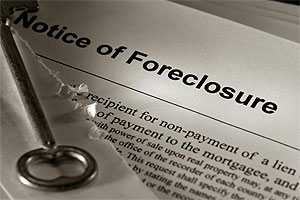 A mortgagee’s foreclosure auction takes place when a borrower (mortgagee) is in default under the terms of the mortgage. The lender (typically a bank) gives the required statutory notice to the borrower and commences the foreclosure process. The culmination of the foreclosure process is the actual foreclosure auction when the lender sells all of its right, title, and interest in the property to the high bidder.
A mortgagee’s foreclosure auction takes place when a borrower (mortgagee) is in default under the terms of the mortgage. The lender (typically a bank) gives the required statutory notice to the borrower and commences the foreclosure process. The culmination of the foreclosure process is the actual foreclosure auction when the lender sells all of its right, title, and interest in the property to the high bidder.
Typically the auctioneer handling the sale will run promotional advertisements in addition to the legal notices required by law. The advertisements will state a required deposit which any potential bidder must bring to the auction in the form of a bank treasurer’s, cashier’s or certified check payable to him/herself. The successful bidder must endorse the deposit check and sign a memorandum of sale (purchase & sale agreement).
Get Started
 At the auction the auctioneer will inspect the deposit checks of all qualified bidders and record their names addresses and phone numbers. The auctioneer will then read the notice entitled “Mortgagee’s sale of real estate” which sets forth the parties involved, when the mortgage was given, the legal description of the property, and the terms of the sale. After reading the notice the Auctioneer will read the Memorandum of Sale and then take questions from qualified bidders. After the question period the Auctioneer and Lawyer for the lender will make any additional announcements and then commence the bidding. The auctioneer will declare the property sold and the sale will be officially completed when the successful bidder has tendered the required deposit and signed the memorandum of Sale.
At the auction the auctioneer will inspect the deposit checks of all qualified bidders and record their names addresses and phone numbers. The auctioneer will then read the notice entitled “Mortgagee’s sale of real estate” which sets forth the parties involved, when the mortgage was given, the legal description of the property, and the terms of the sale. After reading the notice the Auctioneer will read the Memorandum of Sale and then take questions from qualified bidders. After the question period the Auctioneer and Lawyer for the lender will make any additional announcements and then commence the bidding. The auctioneer will declare the property sold and the sale will be officially completed when the successful bidder has tendered the required deposit and signed the memorandum of Sale.